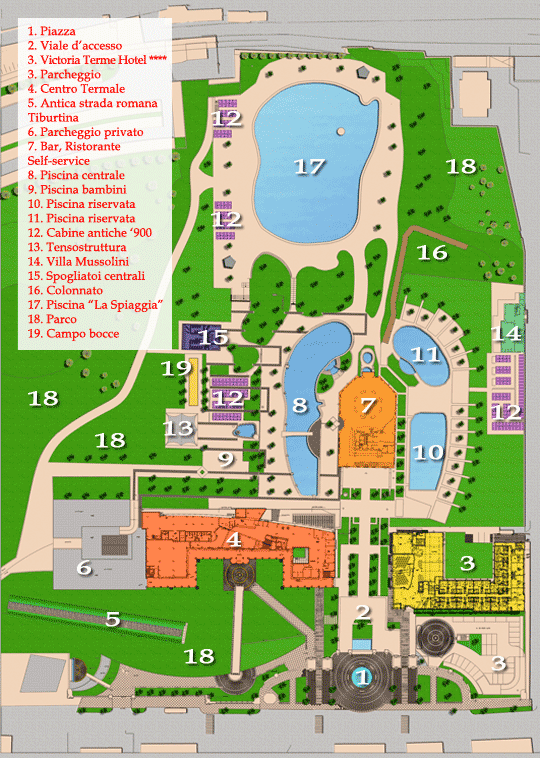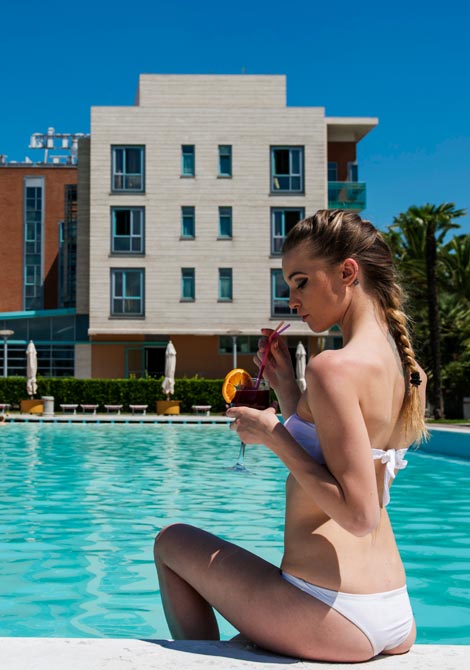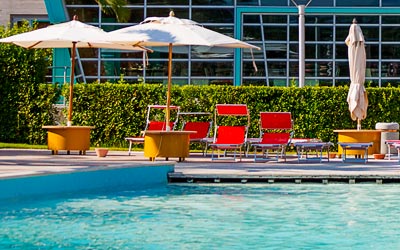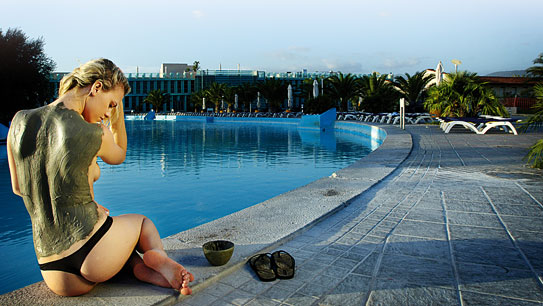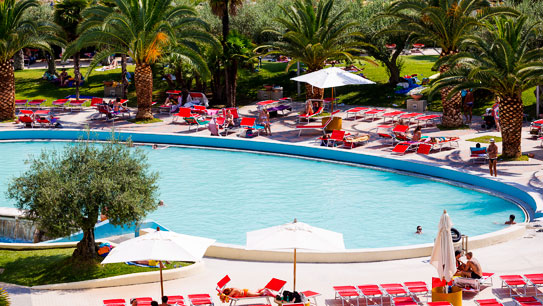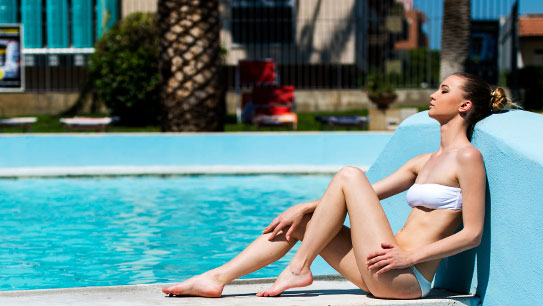The carbon-sulphur springs of the Acque Albule waters, which flow from the two lakes, Regina and Colonnelle, still retain the name that was given to them back in ancient times: Acque Albule.
They were often referred to by Latin writers and celebrated for their therapeutic and medicinal virtues. Pliny the Elder reported that “the soldiers wounded in combat were led to Acque Albule as the best place for cure, from which they returned cured” (Hist. Lib XXXI, 6). Archigene, a well-renowned physician from Apamea who lived in the times of Roman Emperor Trajan, extolled the quality of the sulphurous waters, indicating how effective they were in the treatment of stomach ailments and the medication of sores and ulcers.
Virgil made reference to them in his epic poem Aeneid. Nero had their flow redirected to the Domus Aurea (his “Golden House”) via the Marcio Aqueduct, while Emperor Hadrian used them to feed the numerous pools of his sumptuous villa (Villa Adriana). Finally, Caesar Augustus, who apparently suffered from gout, drew enormous benefit from sulphurous baths, so much so that he commissioned architect M. Vipsanio Agrippa to build a sumptuous thermal baths, whose massive ruins can still be seen today. In the late Imperial period, the Thermal Baths of Agrippa saw its heyday, before becoming almost completely forgotten: subsequently looted, stripped of their ornaments and left to fall into ruin.
Only in the Renaissance did enlightened gentlemen once again discover and appreciate them: Cardinal della Queva reopened the water’s outflow channel, while Cardinal Ippolito d'Este, having turned to these waters to treat his own ill-health, built the channel and was the first to attempt surveys in the depths of the lakes. Precisely thanks to the healing properties of the Acque Albule waters, which had been recommended to him by the physician to Francesco I for the treatment of gout, Cardinal Ippolito d'Este, who hailed from a powerful family, asked for and obtained governance of the city of Tivoli. Here he built the famous Villa d'Este high on a hilltop, to escape the marshy and unhealthy area surrounding the water's source.
At the beginning of the 2000s, with a long-term intervention, the Sirio Hotel (owner of the hotel complex in the vicinity of the spa) acquired a stake in the Terme at via the Società delle Acque Albule, owner of the Spa.
A development project was immediately given the go ahead, whose first phase was the functional and structural adaptation of the entire complex, before moving on to a new European state-of-the-art thermal spa, two new hotels with health clinics and a PalaTerme within the spa’s perimeter. And so it was that the ancient Baths of Rome came to life once more, adding to the territory a series of first-rate tourist services using those unaltered healing properties of Acque Albule; from a glorious past to a radiant present.
Since 2001, Studio 3c+t Capolei Cavalli architectural associates from Rome have been involved in upgrading and restoring the Terme di Roma, whose project was divided into four phases.
- The first phase involved restoring the historic pool area (6500 MQ) and architectural renovation of the Anderloni building, completed in June 2002.
- The second phase led to complete renovation of the state-covered thermal treatment sector; a structure was built that has brought the Terme di Roma to the forefront of its sector on a national scale, giving it a new lease of life thanks to the quality of the thermal waters, the services offered and the materials used.
- The third phase led to the creation of the 4-star Victoria Terme Hotel, located in the Thermal Park.
